Touching Tomorrow atPukyong National University
NEW BEGINNING, NEW INSPIRATION
DAYEON CAMPUS
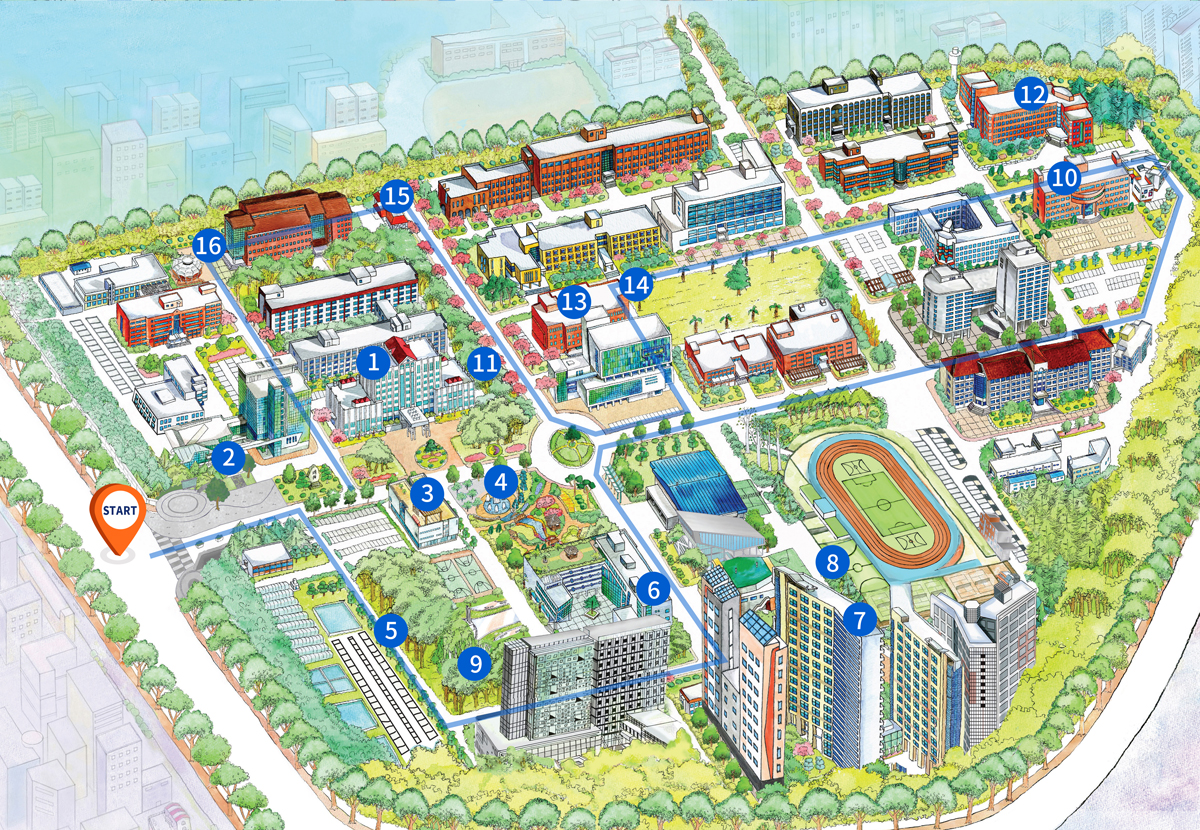
- 1Quince Tree
- 2Dongwon Jang Bogo Hall
- 3Haneoul Garden, Solar Streetlight
- 4Baekyong Garden, Baekyong Tower, Fish Culture Experiment Station
- 5Academic Information Hall
- 6Sejong Building
- 7Busan Radiological Monitoring Station
- 8Hymalaya Cedar Forest, Peach Tree
- 9Jangyeongsil Building
- 10Doran Garden, Cherry Blossom Street, Jar of the Love
- 11Korea Inter-University Institute of Oceanography
- 12Museum
- 13Pukyongsaurus Millenniumi
- 14Walker House
- 15Lee Ju Hong's Literature Stone
v
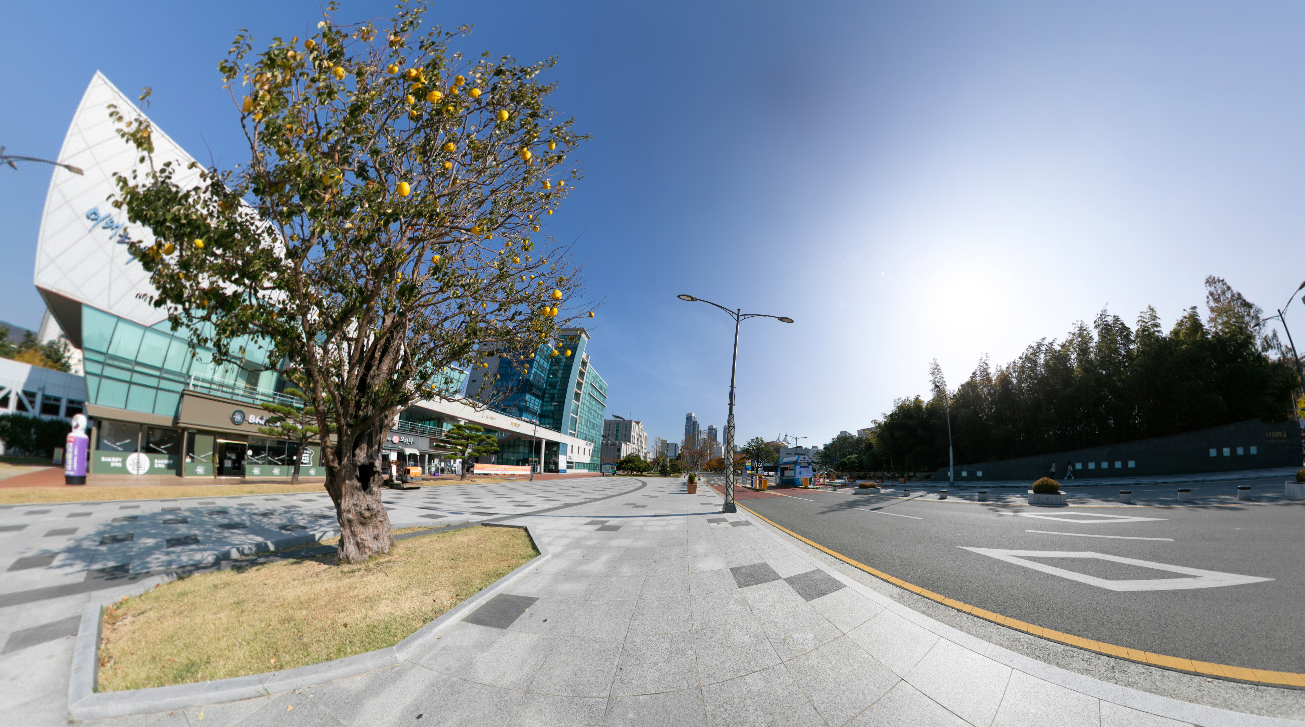
Quince Tree
A quince tree near the main entrance of PKNU is estimated to be at least 200 years. This tree is one of the oldest trees including a quince tree at Chungik temple in Uiryeong and Uirim temple in Masan.
Dongwon Jang Bogo Hall
Dongwon research foundation whose founder is the president of Dongwon Group, Kim Jae Cheol, gave PKNU Dongwon Jang Bogo Hall which organization expenses was about 7 billion won. Kim Jae Chel graduated from PKNU, and he is an honorary president. This structure shows that how he loves his old school and juniors in PKNU. He started PKNU in 1954 as a student of Department of Fishery.He spoke as follows at the opening ceremony on February 25th in 2010. "About 1200 years ago, there were no marine chart and compass. However, Jang Bogo commanded the sea in the Northeast Asia. I decided to establish Jang Bogo Hall because I want my juniors to emulate the frontier spirit. Also, I hope many students to take a rest and to come true their dreams at this building."
Meanwhile, 'Foucault's Pendulum' and a huge wooden painting are on the lobby on the first floor of this building. Foucault's pendulum was the experimental simple pendulum and used to prove the rotation of the earth by Foucault in 1851. It was placed to make students know the rotation of the earth and realize the importance of the environment and all of the lives in the earth. It can be shown in Busan only.
The title of a huge wooden painting is 'The Song of the Great Sea at the Shining Dawn'. Changpogo Memorial Foundation donated this painting to pray for appearing the second Jang Bogo among PKNU students. This painting was made Yuk Kwang Jeong called the master of the artistic handicraft in China. It took around one year to complete it, and it was made of lime tree. This work was made to show the continuous challenging and the excellent vigor to many students.

Haneoul Garden, Solar Streetlight
As the eco'versity, PKNU is trying to develop a local community and a country by protecting the global environment and all of the lives in the earth. Haneoul Garden is a place where the members of PKNU and all of the local residents can take a rest together. There are fountain, small stream, and pavilion in there. In addition, PKNU decided to tear down the wall which enclosed PKNU to provide many local residents with PKNU campus as the break area.The eco-friendly tracking the light of the sun LED streetlamps are cross the street from the Haneoul Garden. Because this solar panel of the streetlamps can move up and down and left, and right, it can gather the solar heat by tracking the sun. Also, because it is kind of an automatic flickering system, the streetlights go on at sunset when brightness of the surroundings is under the 4 lux, and they go off at sunrise. This is a system which can even save the solar radiation energy.

Baekyong Garden, Baekyong Tower, Fish Culture Experiment Station
Baekyong Garden can be called a historic place of PKNU because Baekyong Garden has existed since National Fisheries University of Busan was founded in 1941 which is one of the forerunners of PKNU. It is very popular space for enjoying meditation and taking a rest with PKNU students because pine forest is very dense.Baekyong Tower is next to Baekyong Garden. It was built to pay tribute to the spirit of those alumnus died by meeting with an unexpected accident going out fishing in Samoa and North Pacific Ocean to develop deep-sea fishery. Due to their noble sacrifice, Korea can develop the fishing industry.
All of the practical exercises and experiments in raising fish are performed in the Fish Culture Experiment Station, and the development of the fishing industry is made at there. The grass carp and the silver carp could settle for the first time in Korea by being reproduced artificially in 1963. Also, PKNU took the lead in developing the fancy carp in Korea in the mid-60s. In addition, PKNU solidified the foundation of breeding by studying the ideal temperature on rearing of Japanese eel. Moreover, PKNU succeeded in the development of the highbred Tilapia, the facility for them, and their feed. Especially, PKNU is trying to develop the new technology to prevent the environmental pollution while farming them by developing very large scale recirculating culture system.
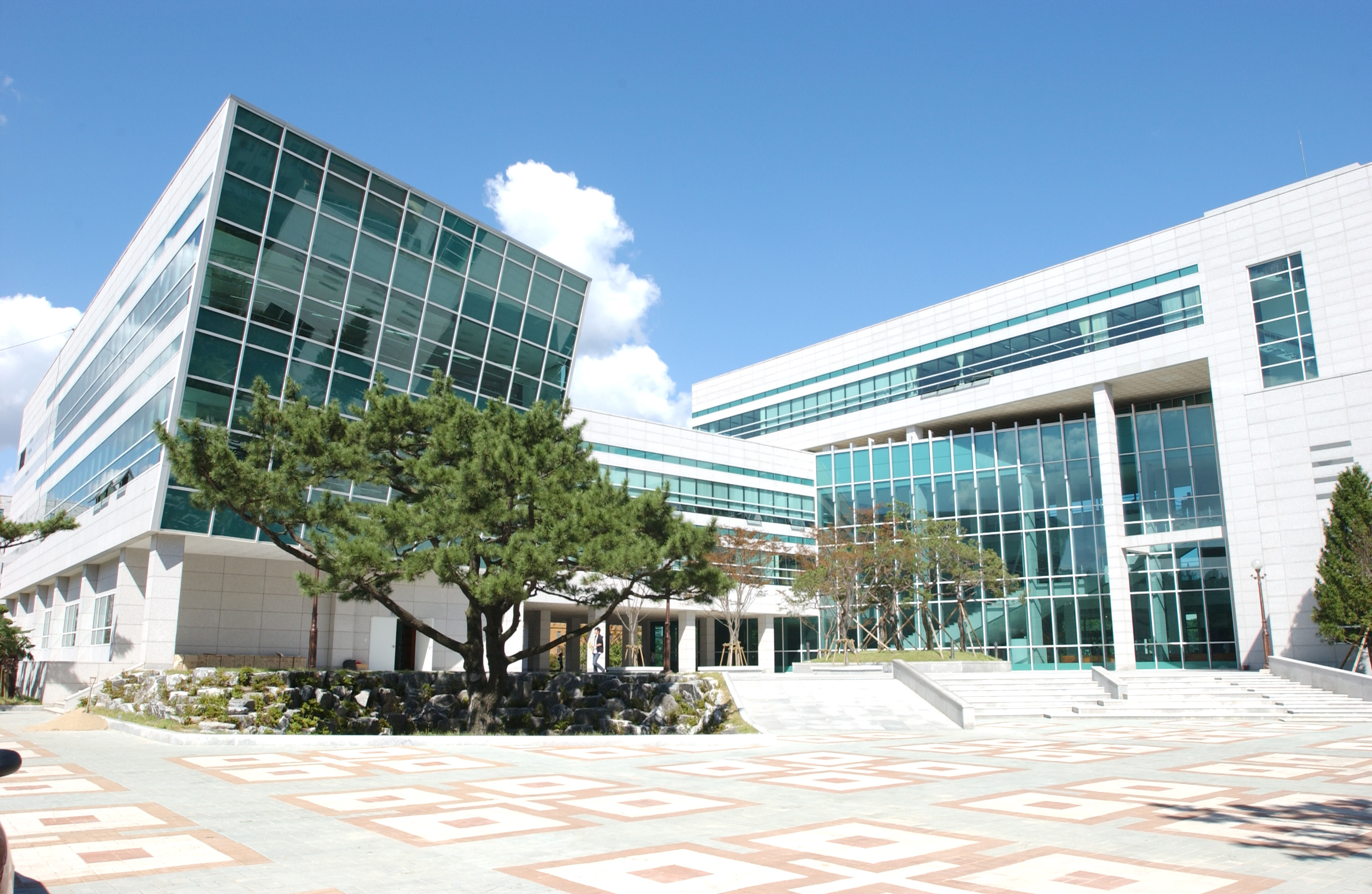
Academic Information Hall
An academic Information Hall is a cutting-edge digital library where there are multimedia database including electronic journal. Also, there are monographs room, satellite broadcasting hearing room, information support room, Internet search room, and study rooms. In addition, it is possible for anyone who wants to read books to look through the books in the library.
Sejong Building
Sejong Building is a large scale dormitory comprised of two-building apartment complex. One is a building with twenty stories above ground and one below, and the other is a building with seventeen stories above ground. The gross area of this Sejong Building is 31,282 m2. It is possible to overlook Gwang-an Bridge which is also called Diamond Bridge at the porch on the twenty floor. It is the highest dormitory in the countries.The number of the single rooms is 68, and the number of the double rooms is 782. About 1700 students can live in this dormitory. There are an air conditioner, a refrigerator, a desk, a bed, and a closet in each room. Also, there is one bathroom. All of the students living in dormitory can use the Internet in their room conveniently.
PKNU dormitory is providing beautiful scenery and comfortable residential space as well as convenience facilities for the study and the spare time activity for the students. In addition, it can help the students to study hard by creating an academic atmosphere. Sejong Building which is a familiar landmark on PKNU was established by BTL (Build Transfer Lease) project for the first time. BTL project is to use private capital to invest educational facilities. It has been gone ahead to expand and improve the insufficient dormitory in the national universities in the country. It is operated under the funds of the private businessmen. After finishing establishing the dormitory, they can recover their investments from the government by renting the building to national universities. The right of the management last about 20 years.
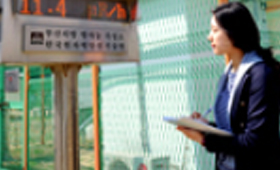
Busan Radiological Monitoring Station
It is one of 12 supervisory organizations in the country which have been operated by Korea Institute of Nuclear Safety (KINS) to observe the level of radiation in the atmosphere since 1967. It is providing the needed information to prepare the appropriate countermeasures and to prevent the atomic accidents in Busan and Gyeongsangnam-do.
Hymalaya Cedar Forest, Peach Tree
Hymalaya Cedar Forest is next to Academic Information Hall. There are many Hymalaya Cedars and benches. Some students can go there to take rest in the middle of studying hard in the library.A Peach Tree which is estimated at least 40 or 50 years old is behind Hansol Building which is across from Hymalaya Cedar. This tree is famous of being tasteful which pink flowers blossom in spring.

Jangyeongsil Building
It was established to obtain the world class results of the research works. There is much high-tech equipment including an electron microscope. PKNU professors, researcher, industries and laboratory are supporting 35 million studies a year.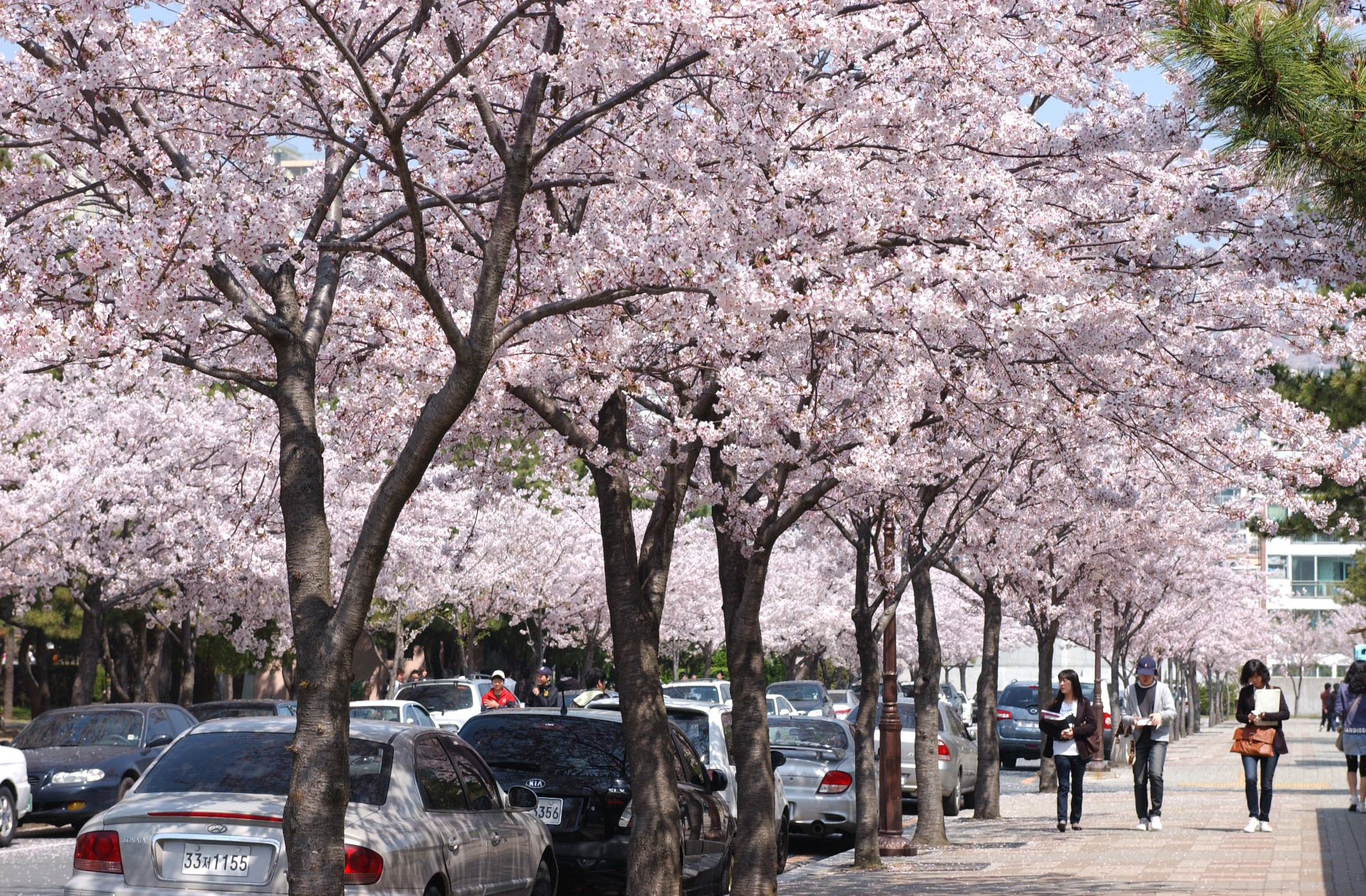
Doran Garden, Cherry Blossom Street, Jar of the Love
Doran Garden means that the dense forest of pine trees between Administration Building and Gaon Building. There are some benches under about 300 pine trees. It is popular rest area with PKNU students and local residents.Cherry blossoms are in full bloom every spring. Especially, Cherry Blossom Tunnel which is near Doran Garden became one of the attractions in Daeyeon Campus.
There is the jar of the love on the first floor of Gaon Building which is across from Doran Garden.
Anyone can bring the rice, and they can also fill in the rice in the jar of the love. This jar was made to give the poor the rice. After placed Jar of the Love on Gaon Building, PKNU has encouraged to be given the rice instead of the garland for the celebrations. Therefore, the rice in it was donated when some events were held in PKNU. It opens for everyone 24 hours a day. PKNU is waiting for the donor because the rice is often exhausted. (Inquiry: Department of External Cooperation +82-51-629-5097)

Korea Inter-University Institute of Oceanography
It founded in 1992 is managed by 10 universities including PKNU which has Department of Oceanography, and Chonnam National University. It has 2 state-of-the-art vessels to support the marine science research, and they help to study efficiently. One is Kaya which is the vessel for the practical training, and the other is Tamyang which is the vessel for the exploration.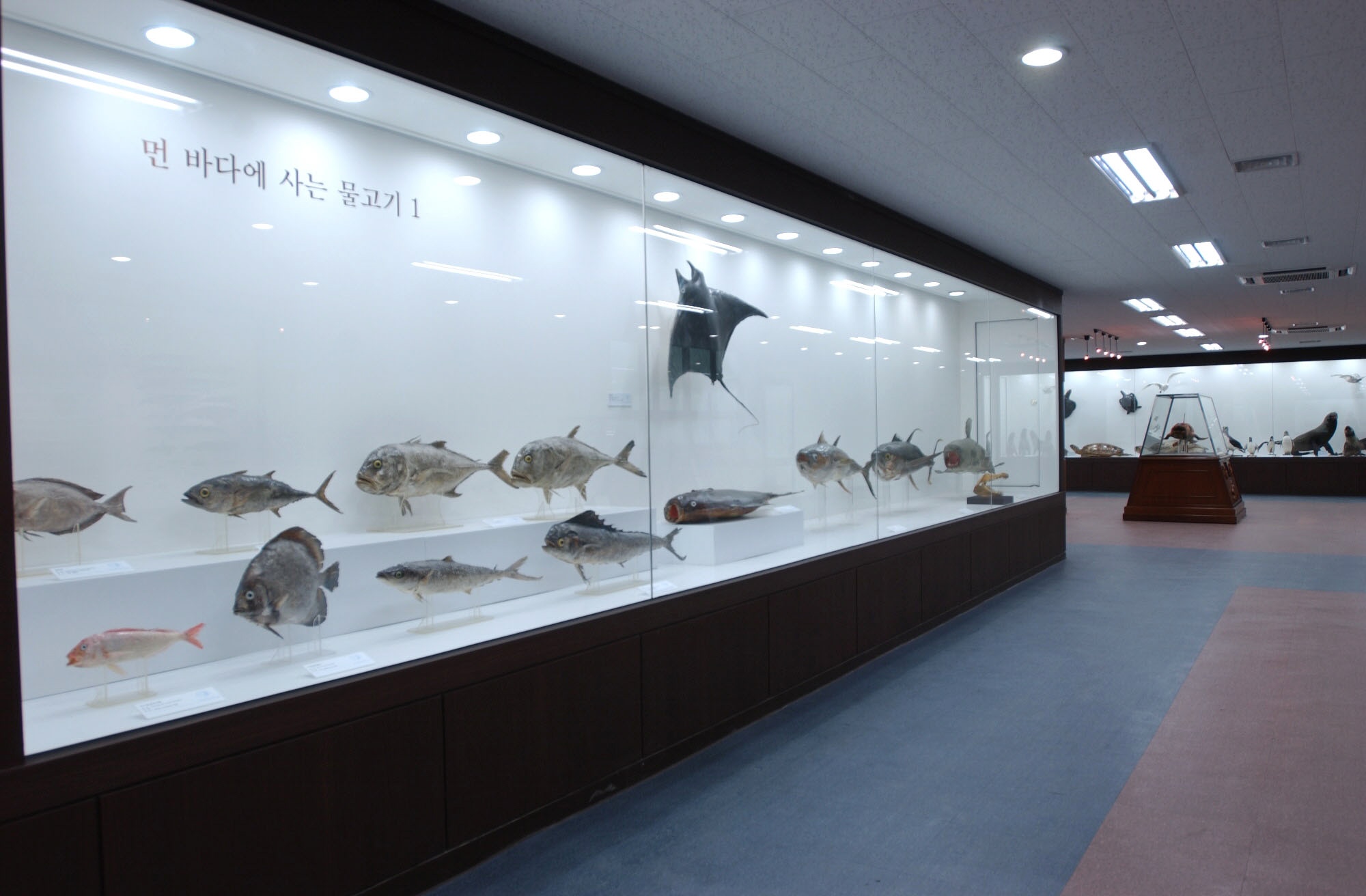
Museum
PKNU museum is located on the first and second floor of Cheongun Building. It has displayed the greatest number of the materials in the field of fisheries and marine among the other universities in the country. There are 2,278 exhibits including 1,262 cultural properties, 374 marine organisms, 287 fishing gears and fishing boats, 55 vessels, 283 PKNU’s historical materials, and 17 folk materials. Also, there are many exhibits which have historical value including a chanfron of the old Gaya period which was considered that it is the earliest chanfron, and armor which was only excavated from Dugok Historical Site in Gimhae. In addition, there are many interesting and invaluable stuffed marine lives including coelacanth which is called living fossil, and there are the only 2 in Korea. Moreover, there are bone of the southern right whale, giant clam, various sharks, fish which habitat was the coastal waters and the ocean, crustacean, and the sea animals.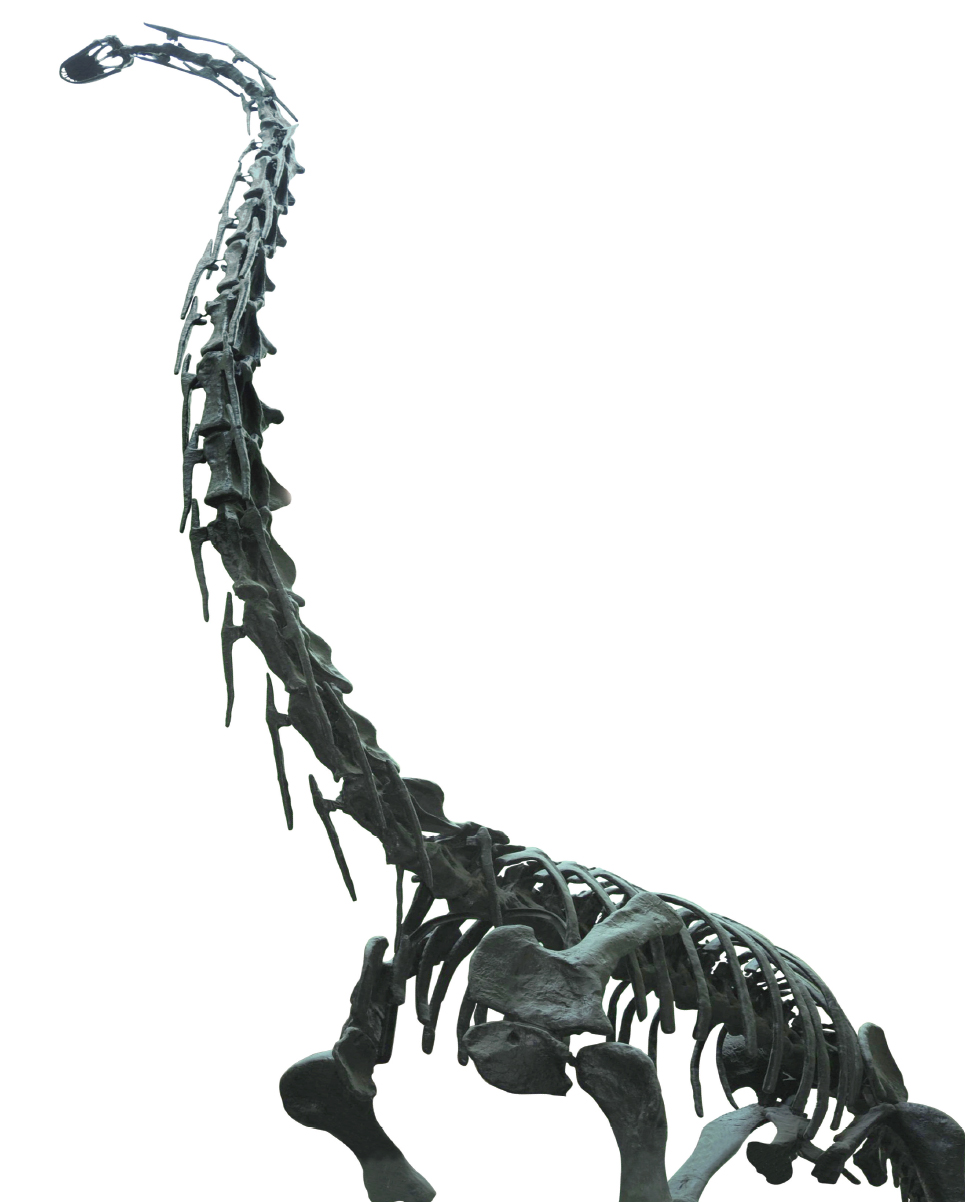
Pukyongsaurus Millenniumi
Pukyongsaurus Millenniumi lived in the Korean Peninsula about 140 million years ago, and it is the first dinosaur to have Korean name. It has displayed on the lobby of the Cheongun Building.Its fossil of the bone was discovered in the small rocky island located on the coast of Galsa-ri, Geumseong-myeon, Hadong-gun, Gyeongsangnam-do, and restored by PKNU professor Baek In Seong’s team.
Because Pukyongsaurus Millenniumi is plant-eating dinosaur, it has 4 legs and long neck. Moreover, it is estimated to live in Korean Peninsula in the Cretaceous period of the Mesozoic era. It is also estimated to be between 20 and 25 meters long from head to tail.
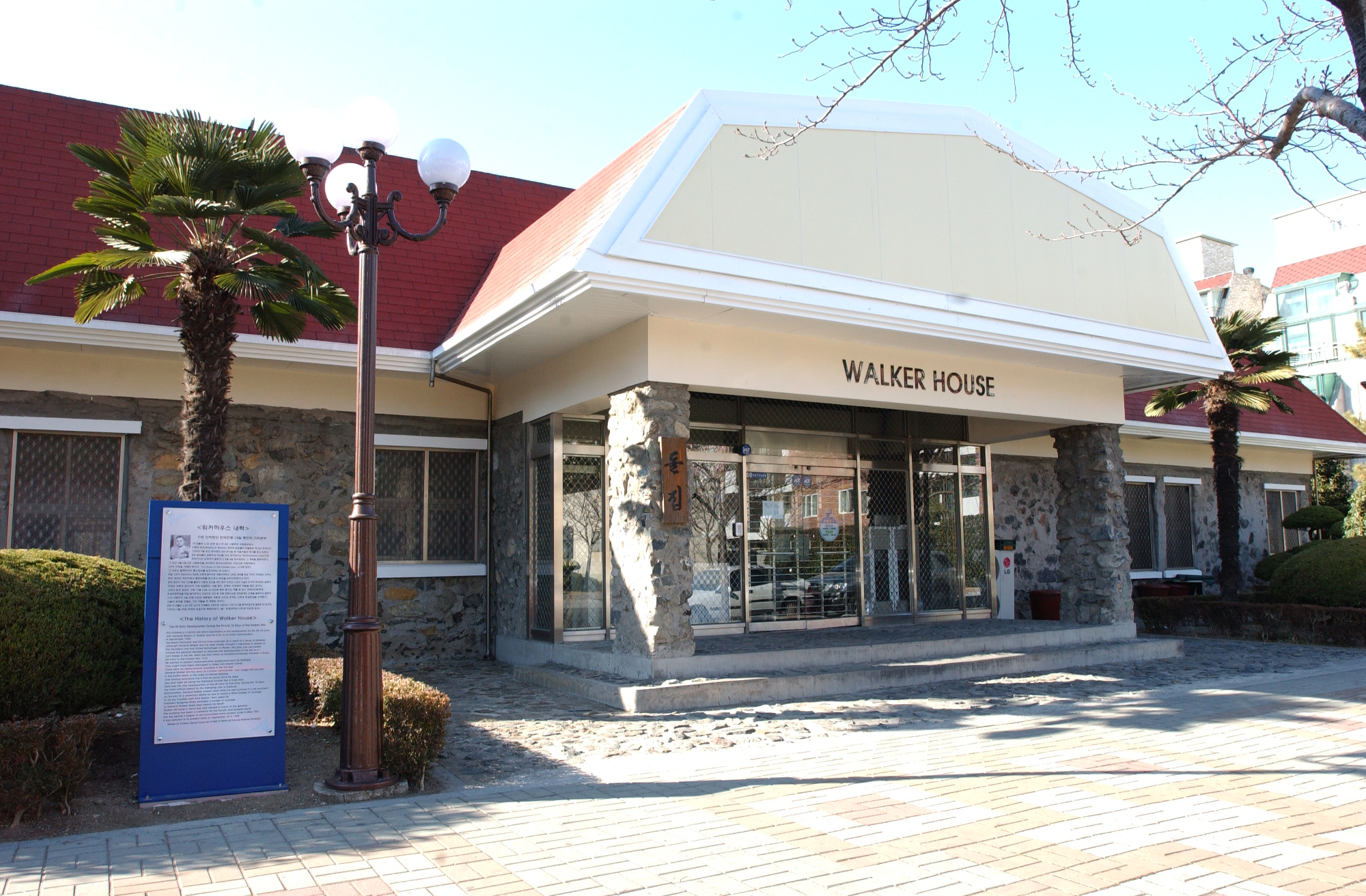
Walker House
It is a single-story structure, and its gross area is 365m2. The wall of this building was made of the stone and the cement, and the thickness of the wall is 70㎝. This structure is a kind of bunker, and it was built substantially to resist damage from the shells.In the past, Walton H. Walker headquarters was in this place which played a major role in defending the Nakdong River line of defense at the time of the Korean War. Admiral Walker decided to move U.S. Army Headquarters from Daegu to National Fisheries University of Busan which is one of the forerunners of PKNU to keep all of the communication equipment safely when the Nakdong River line of defense called Walker line seemed to be in a serious danger.
There is one anecdote that he got in the jeep to confront an enemy even though he was hit by a hail of bullets. He died in the way to event hall to pin a decoration upon his son’s breast in person, who was in the 24th division in Uijeongbu-si, Gyeonggi-do, from a car accident on December 23rd in 1950. Many people mourned his death because President Lee Seung Man had given him the Order of Military Merit before he died. Also, he was going to be promoted because the General of the Army, Douglas MacArthur, asked him to be promoted to an admiral.
